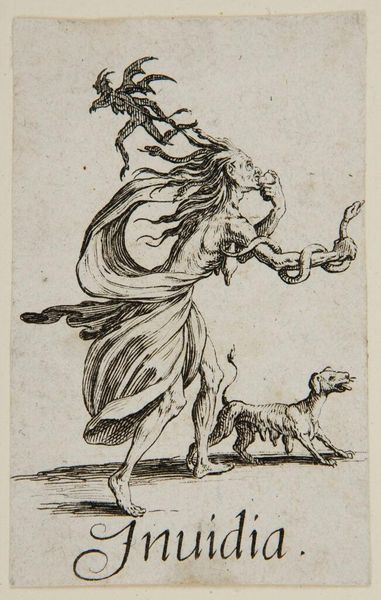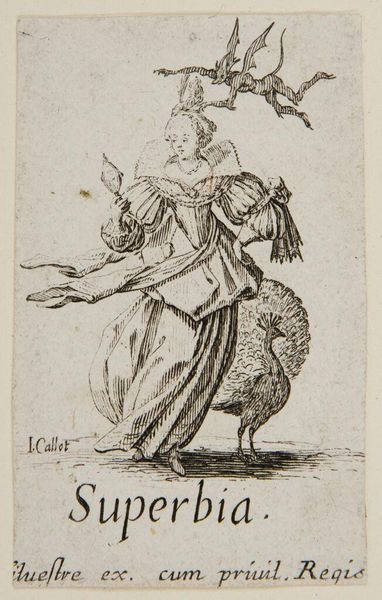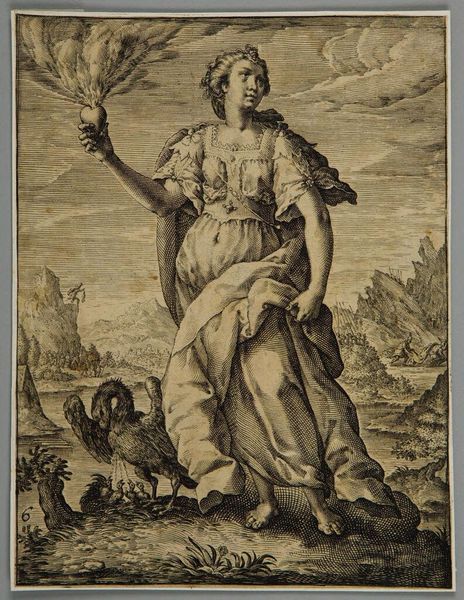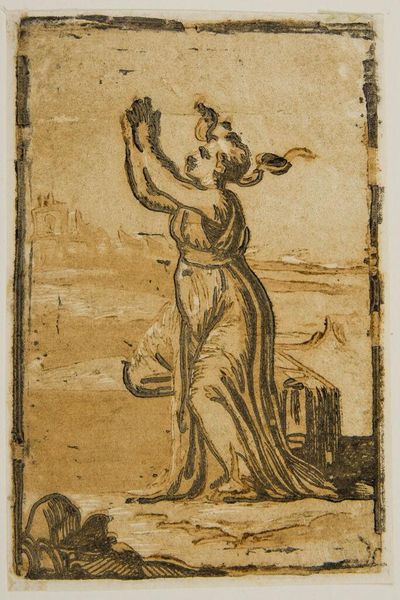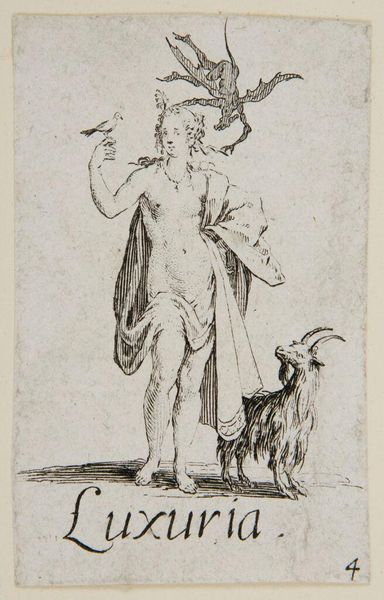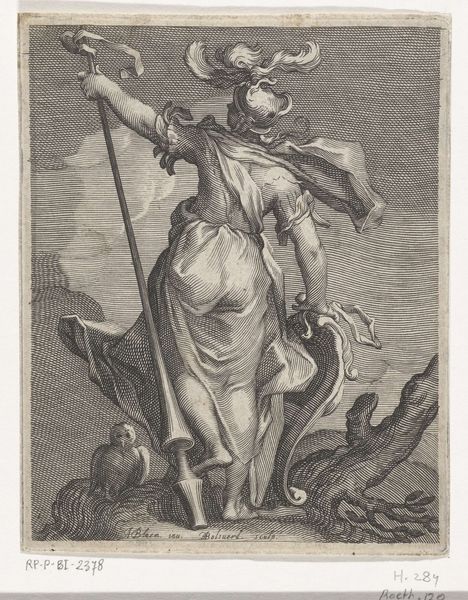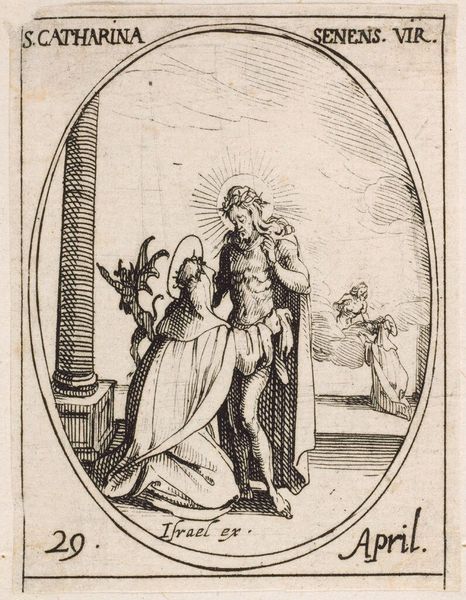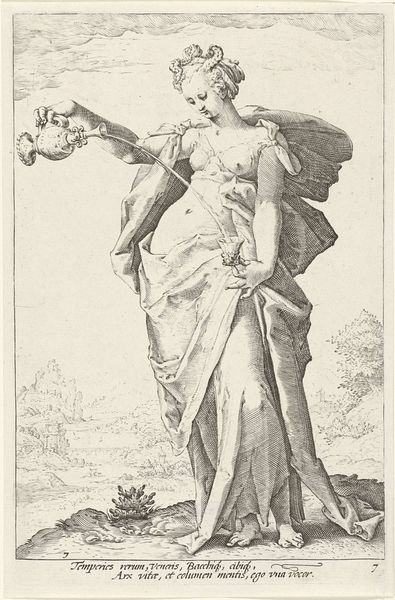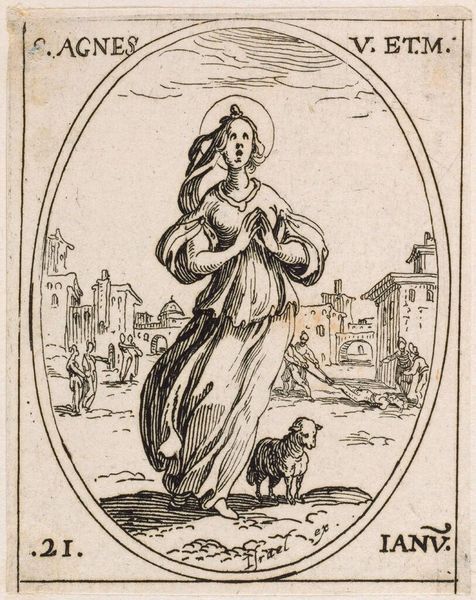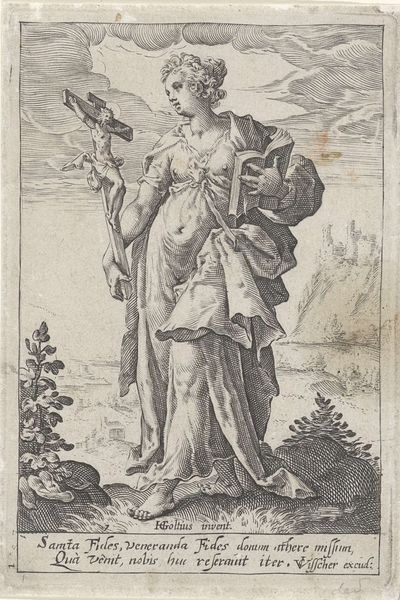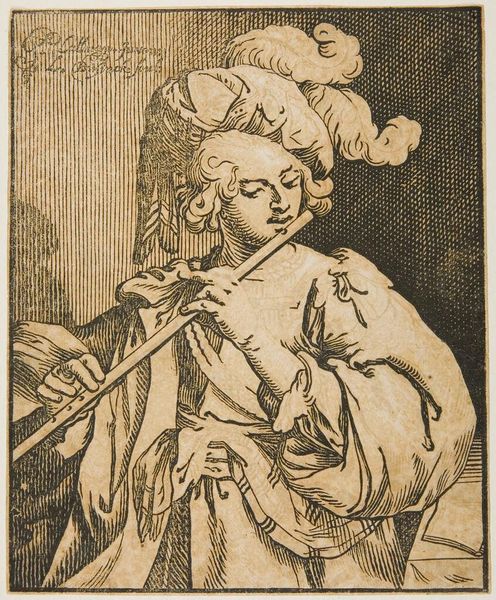
Dimensions: Sheet: 6.7 Ã 4.7 cm (2 5/8 Ã 1 7/8 in.)
Copyright: CC0 1.0
Curator: This is Jacques Callot's etching, "Gluttony." The dimensions are quite small, only about 6.7 by 4.7 centimeters, and it's part of a series on the seven deadly sins. I am struck by the technical precision of Callot's engraving technique; it makes the scene feel both immediate and timeless. Editor: The textures are fascinating; that bristly boar practically leaps off the page. I am curious about the types of labor and materials employed to yield such detail in such a diminutive artwork. I wonder if the availability of those resources had any impact on the work itself? Curator: It's tempting to read this image through a modern lens of body image and consumerism. The central figure, seemingly female, raises a goblet while stepping atop a boar, an allegory of excess. It speaks volumes about gendered expectations and the policing of appetites in Callot's time. Editor: The choice of copper and etching, both capable of mass production, speaks to a desire for wider dissemination. Callot's choices of materials and production methods allowed for the reproduction of "Gluttony," furthering its impact. Curator: Absolutely. The print's affordability meant these moral messages could reach a wider audience. It really makes one consider who had access to such messaging and how it shaped societal norms surrounding consumption. Editor: Analyzing "Gluttony" through its materiality reveals how the means of production influenced its message, and in turn, its circulation. Callot's work offers a glimpse into the cultural values concerning excess and its impact on society.
Comments
No comments
Be the first to comment and join the conversation on the ultimate creative platform.

